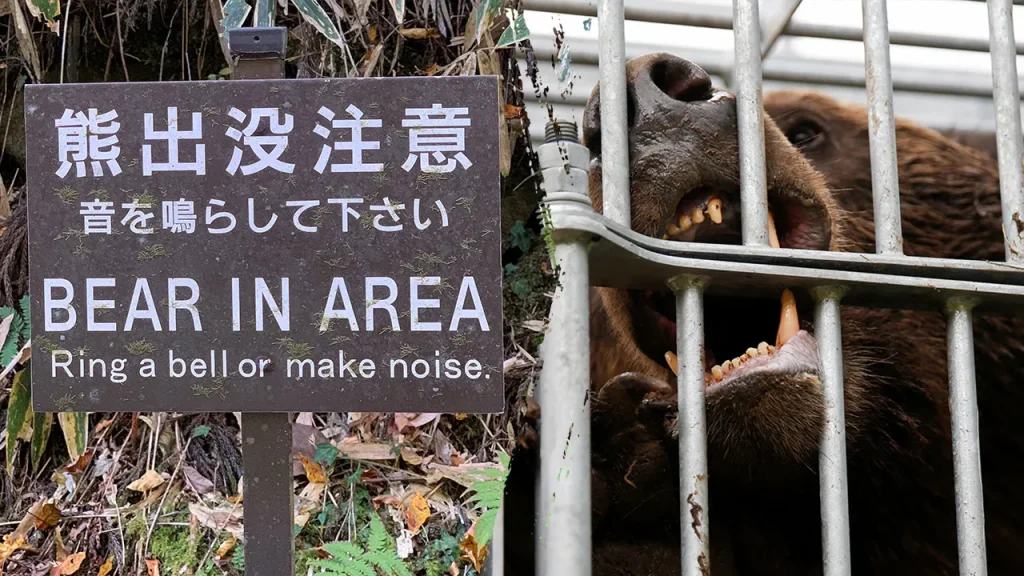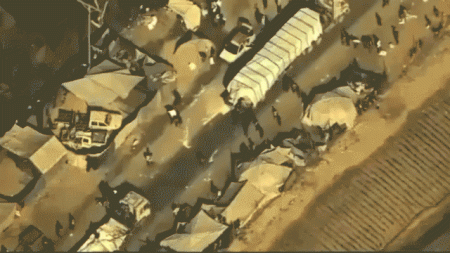Japan’s Bear Crisis: A Nation Grappling with Record Wildlife Encounters
Japan is experiencing an unprecedented wildlife crisis as bear attacks reach historic levels across the country. This year alone, at least 12 people have lost their lives and more than 100 others have sustained injuries from bear encounters, with northern regions like Akita, Iwate, and Fukushima bearing the brunt of these incidents. The situation has become so dire that bears are regularly spotted in populated areas—near homes, schools, and shopping centers—forcing rural communities into temporary lockdowns and creating an atmosphere of fear and uncertainty. In late October, the crisis reached a turning point when Akita Governor Norihisa Satake formally requested assistance from Japan’s Self-Defense Forces (SDF), acknowledging that local resources were overwhelmed by the frequency and severity of the encounters. This unusual step highlights the extraordinary nature of what officials and media are describing as Japan’s most severe wildlife crisis in decades.
The military’s involvement represents a significant but carefully limited intervention in the crisis. SDF personnel are not being deployed as hunters but rather as logistical support—helping transport bear carcasses, setting traps, and patrolling forested areas where bears have been sighted. Defense officials have been explicit that only licensed hunters maintain the authority to shoot bears that pose an immediate threat to public safety. This distinction is important in a country where the military’s role is constitutionally constrained to defensive operations. However, this approach has revealed another dimension of the crisis: Japan’s aging hunter population. Approximately 60% of licensed hunters are now over 60 years old, creating a significant capacity gap in wildlife management. The traditional matagi bear trackers of northern Japan, who once maintained an ecological balance through sustainable hunting practices, have largely retired, leaving fewer experienced individuals to respond when bears venture into human territories.
In response to this demographic challenge, prefectural governments across northern Japan are implementing creative solutions to recruit a new generation of hunters. Authorities in Akita, Niigata, and Hokkaido have increased financial incentives, including higher subsidies, training stipends, and per-bear bounties. These economic measures aim to attract younger hunters to what has traditionally been seen as a declining profession in modern Japan. The urgency behind these recruitment efforts reflects the immediate public safety concerns, but also points to a longer-term ecological management issue that Japan will need to address beyond the current crisis. Without sufficient human intervention through controlled hunting or other management techniques, the bear population could continue to expand into human-occupied areas, potentially leading to more dangerous encounters.
The roots of this wildlife crisis extend beyond simple population dynamics to a complex interplay of environmental and social factors. Experts point to several key contributors: poor harvests of acorns and beech nuts (staple foods for bears), increasingly warm winters that delay hibernation, and the ongoing depopulation of rural Japan that has left once-managed farmland abandoned and created undefined buffer zones between forests and towns. This combination has driven hungry bears out of their traditional habitats in search of food, bringing them into inevitable conflict with humans. The situation illustrates how climate change and demographic shifts can have unexpected consequences for wildlife management and public safety, creating challenges that traditional approaches may be insufficient to address.
The surge in bear encounters has reignited a national conversation about the balance between conservation and public safety in contemporary Japan. Bears occupy a complex place in Japanese culture—traditionally respected in folklore and rural traditions as symbols of strength and endurance, yet increasingly perceived as dangerous intruders as attacks rise. This cultural tension is playing out in policy debates, with some local residents demanding more aggressive culling programs while environmental groups advocate for humane solutions and improved forest management practices. These competing perspectives reflect broader questions about humanity’s relationship with wildlife in the modern world and how to maintain both ecological integrity and human safety when traditional boundaries between wild and settled areas become blurred.
As Japan navigates this wildlife management crisis, the government has emphasized practical safety measures while acknowledging the complexity of the situation. The Environment Ministry has issued guidance urging residents to avoid forest edges, properly secure garbage and food waste that might attract bears, and immediately report any bear sightings. Officials have been careful to frame the response as a wildlife management challenge rather than a “war on bears,” recognizing the ecological importance of these animals even amid the current crisis. Yet for many frightened residents in northern Japan, such nuanced distinctions offer little comfort when bears are appearing in schoolyards and shopping districts. The ongoing situation represents not just a public safety emergency but a profound challenge to Japan’s approach to coexistence with wildlife—one that will require innovative solutions balancing traditional knowledge, modern science, and the realities of a changing climate and society. As winter approaches and bears prepare for hibernation, authorities hope for a respite from encounters, but the underlying issues suggest this crisis may represent a new normal requiring long-term adaptation rather than a temporary anomaly.















